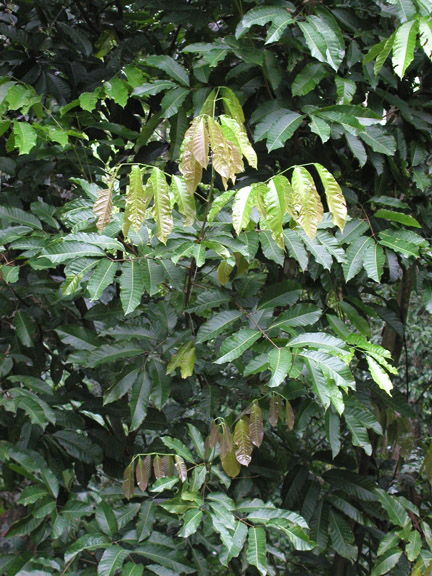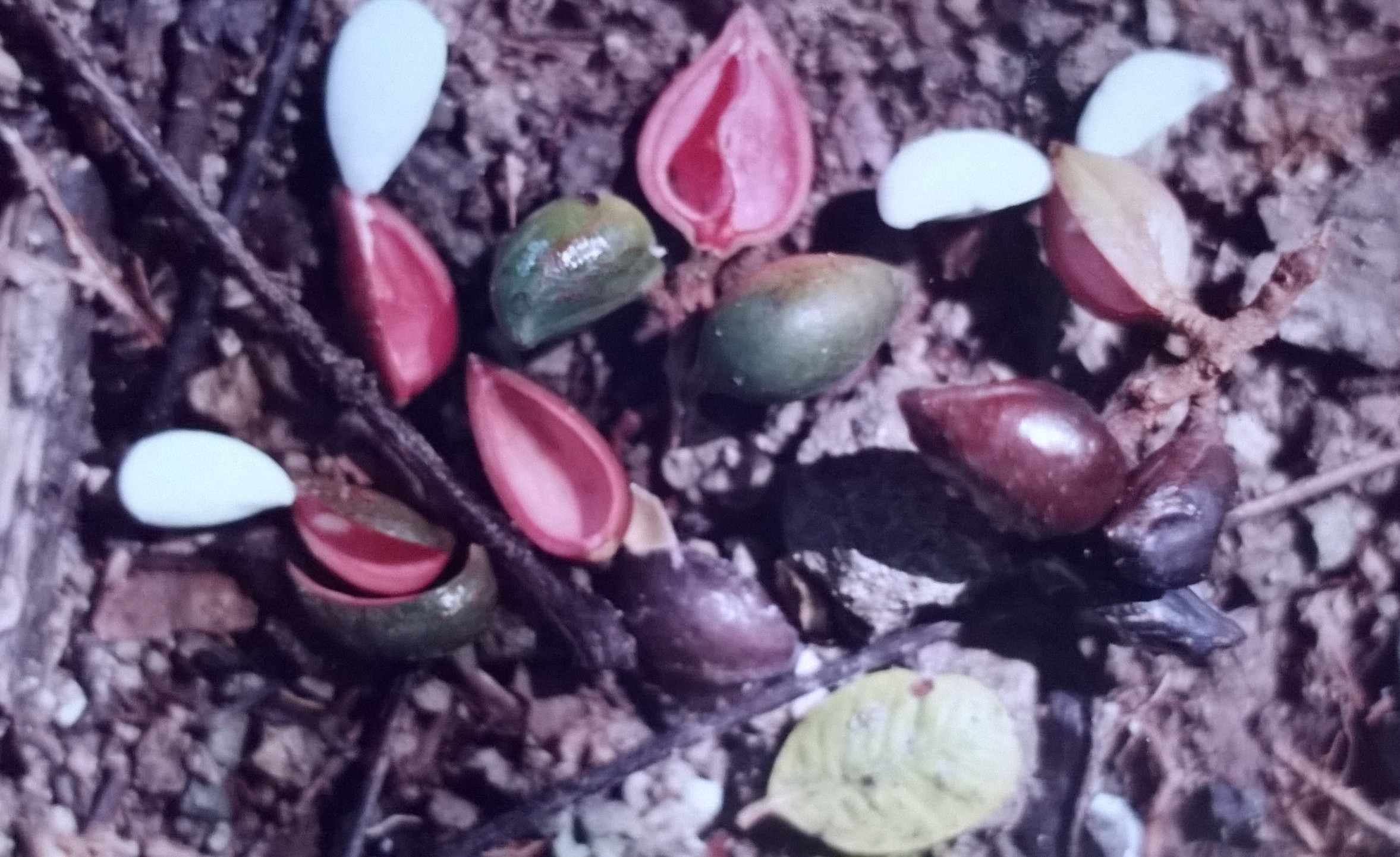Protium panamensis (Rose) I.M. Johnston
Burseraceae CANFÍN
Tree: Occasional understory to sub-canopy (10-20 m) evergreen tree found uniformly scattered throughout all but the driest forest habitats. This tree is renown for its flammability: even the green wood ignites readily due to the highly combustible nature of Canfín’s hydrocarbon-based sap.

Description: Canfín is usually a small tree, though its trunk may at times exceed 40 cm in diameter. It has a straight, cylindrical bole that is frequently marked by elevated knobs – branch scars – and sometimes by encircling rings as well. Canfín bark is smooth, creme-colored or tan, and finely textured. It retains large quantities of clear, odorous sap, as do the twigs and leaves. The species has a thick, narrow, and regularly shaped crown. Leaves are extremely large (40 cm by 25 cm), imparipinnate, and alternate. Each of the 7 leaflets (20 cm by 5 cm) has a narrow, finger-like shape, a wavy margin, and a small, finely pointed drip tip. New leaves are generated (and some older, yellow ones are shed) late in the wet season, from about October to December.
Flowers are imperfect and the sexes are borne on different trees (dioecious). Male flowers are produced in long, stringy, subterminal panicles and are quite abundant though individually small (3 mm). Female flowers are fewer in number and found on stouter and shorter sub-terminal panicles located on the uppermost branches of the trees. They are pale-green or white and contain four minute petals and eight stamens. The aroma they emit is strong and sweet (Flora of Panama). Blossoming occurs in April and is a highly regular and synchronized event.

Fruits are relatively large (4 cm) valvate capsules containing 2 to 4 sections. Green at first, these fruits are held upright in the tree and above the foliage (quite unlike those of P. copal). They ripen a deep red color and split open, revealing narrow, angular (wedge-shaped), gray-brown seeds surrounded by thick and pasty white arils. Each ariled seed falls from its capsule and dangles beneath it, suspended by a thin thread. Fruits mature in August (this species has a very discrete and punctuated fruiting season). Protium seeds germinate within a couple of weeks of harvest.
Similar Species: The only tree with similar stature and foliage to P. panamensis is Trichilia tuberculata. To distinguish them, look for Protium‘s larger leaves; longer, finger-like (not tapering) leaflets; and opposite leaflet arrangement along the petiole (versus Trichilia‘s alternate arrangement).
Natural History: Protium flowers are probably pollinated by insects while its fruits are dispersed by birds.
Uses: The flammable nature of Canfín sap makes the green wood and bark of this species useful as kindling for starting campfires and the like. Apparently the sap of related species has been used as incense and the wood for furniture and plywood (Allen, 1956). One wonders if this species might have commercial value as a source of hydrocarbons if planted on a massive scale.
Distribution: Canfín is found in most deep forest habitats along the Pacific slope and it occurs all along Costa Rica’s middle to southwest Pacific lowland region. It ranges from Costa Rica to Colombia (Holdridge & Poveda, 1975).
